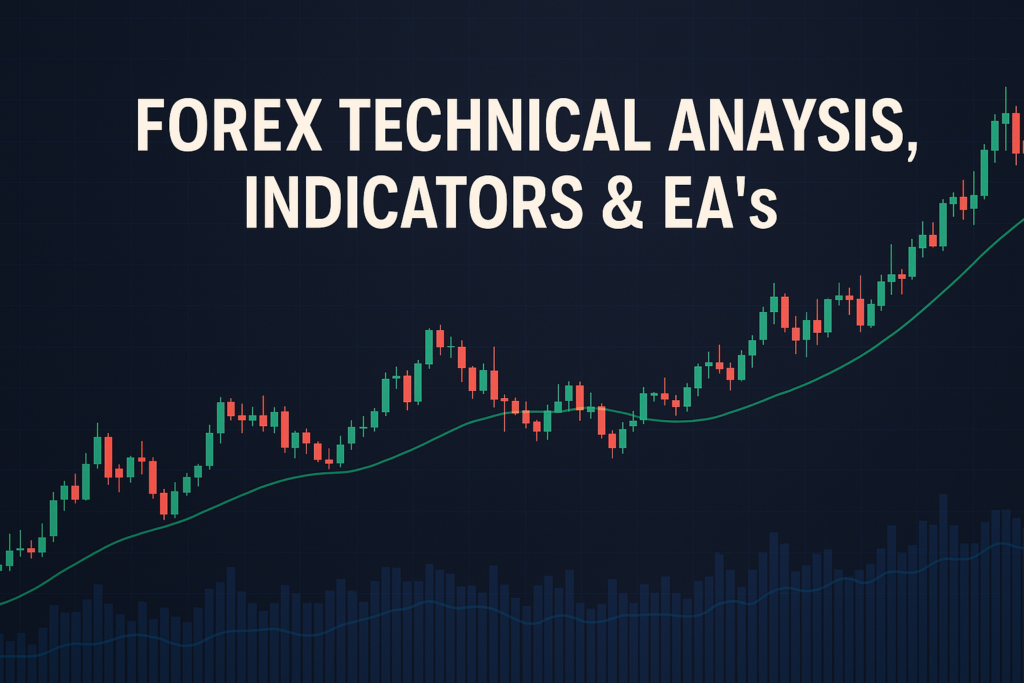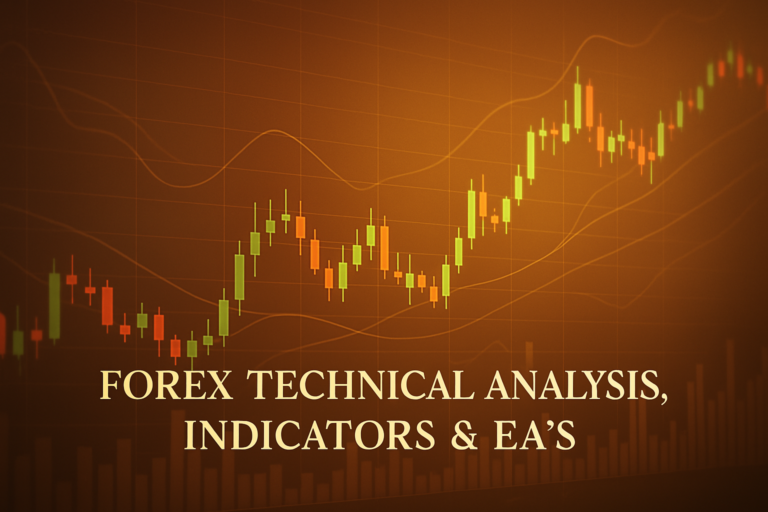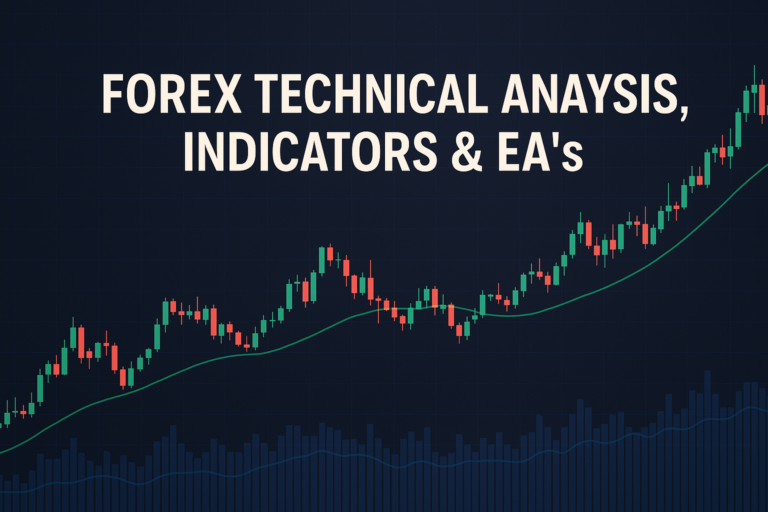
Simple moving average helps traders identify trends and support levels in Forex, making it essential for effective trading strategies.
Have you ever felt lost in the world of Forex trading? The simple moving average (SMA) can be a guiding light. It helps traders make sense of price movements by smoothing out the noise. The concept is simple, yet powerful, making it essential for both beginners and professionals.
However, many traders struggle with how to use it effectively. They often find it challenging to interpret the signals it provides. Understanding the simple moving average is crucial for anyone looking to navigate the Forex market successfully. With the right knowledge, you can harness its potential to improve your trading strategy.
This article will take you on a journey through the world of simple moving averages. We will explore what it is, how it works, its advantages and disadvantages, and how to apply it in real trading scenarios.
A currency trading system is crucial for making informed decisions in Forex. It helps traders analyze market movements and implement effective strategies. If you want to learn more about creating a successful currency trading system, check out this currency trading system.
What is a Simple Moving Average?
What is a simple moving average?
The simple moving average (SMA) is like a friend who calms the noise around you. Imagine you are trying to listen to music in a crowded place. The SMA takes the price data over a specific period and averages it out. This gives you a clearer view of the overall trend without the distractions of daily ups and downs.
Types of Simple Moving Average
There are several types of moving averages. The most common are:
- Simple Moving Average (SMA): This is the basic form, averaging prices over a set number of periods.
- Exponential Moving Average (EMA): This gives more weight to recent prices, making it more responsive.
- Weighted Moving Average (WMA): Similar to EMA, but weights are distributed differently across the periods.
How Simple Moving Average Smooths Out Price Action
The SMA works like a filter. It smooths out price action by reducing the impact of random price spikes. For example, if the price of a currency pair is bouncing around, the SMA can show you the general direction it is heading. This is especially helpful for traders looking for trends.
Common Periods Used and Why
Traders often use different periods for the SMA, like 10, 20, or 50 days. A shorter period (like 10 days) reacts quickly to price changes, while a longer period (like 50 days) provides a broader view. Choosing the right period depends on your trading style and goals.
The History of Simple Moving Average: How It Became Popular
Origin of Simple Moving Average
The simple moving average has been around for quite some time. It was created in the early 20th century by traders who needed a way to analyze market trends. They realized that averaging prices over time could help them make better trading decisions.
When Did Traders Start Using It Widely?
Real-Life Stories
Many professional traders owe their success to the simple moving average. One famous trader used it to identify a significant trend in the Forex market. By following the SMA, he made a fortune by buying low and selling high. His story inspires many new traders to learn about the SMA.
Advantages and Disadvantages of Simple Moving Average
Advantages:
Understanding the advantages of the simple moving average can give you an edge:
- Helps Identify Trends Easily: The SMA simplifies the process of spotting trends. If the price is above the SMA, it could indicate an upward trend, while being below may suggest a downward trend.
- Useful for Dynamic Support and Resistance: The SMA can act as support or resistance levels. Traders often look at the SMA for potential entry and exit points.
- Works Well for Crossover Strategies: Many traders use SMA crossovers to signal buy or sell opportunities. When a short-term SMA crosses a long-term SMA, it can indicate a change in trend.
Disadvantages:
However, the SMA isn’t perfect. Here are some disadvantages:
- lags Behind Price Movements: The SMA is based on past prices, which means it doesn’t react quickly to sudden market changes. This lag can lead to missed opportunities.
- Can Give False Signals in Sideways Markets: In a sideways market, the SMA may provide confusing signals. Traders might enter trades based on false breakouts, leading to losses.
How to Apply Simple Moving Average on MT4 & MT5
Step-by-Step Guide to Adding Simple Moving Average on Charts
To start using the simple moving average on your charts, follow these simple steps:
- Open your MT4 or MT5 trading platform.
- Select the currency pair you want to analyze.
- Go to the “Insert” menu, choose “Indicators,” and then “Trend” to find “Moving Average.”
Customizing Simple Moving Average Settings
You can customize the SMA to fit your trading style:
- Choose the period you want to analyze.
- Select the color and thickness for easy visibility.
- Decide on the type of moving average (SMA, EMA, etc.).
Saving Templates for Easy Application
To make your trading easier, save your SMA settings as a template. This way, you can apply it to any chart quickly. Just right-click on the chart, select “Template,” and save your settings.
5 to 7 Trading Strategies Using Only Simple Moving Average
Let’s explore some practical trading strategies using the simple moving average.
All Time Frame Strategy (M5 to D1)
This strategy works for various time frames:
- Best Time Frame: Any time frame from M5 to D1.
- How It Works: Buy when the price crosses above the SMA, and sell when it crosses below.
- Example of Trade Setup: If the price of EUR/USD crosses above the 20-day SMA, consider a buy trade.
Trending Strategies
Utilize the SMA to follow trends:
- Best Time Frame: H1 or H4.
- How It Works: Look for trends using the 50-day SMA. Buy in an uptrend and sell in a downtrend.
- Example of Trade Setup: If the price is above the 50-day SMA, enter a buy trade.
Counter Trade Strategies
This strategy takes advantage of price retracements:
- Best Time Frame: H1 or H4.
- How It Works: Sell when the price retraces to the SMA in a downtrend and buy in an uptrend.
- Example of Trade Setup: If the price retraces to the 20-day SMA in a downtrend, consider selling.
Swing Trades Strategies
Capture short-term price movements:
- Best Time Frame: M15 or H1.
- How It Works: Buy or sell based on the SMA crossover.
- Example of Trade Setup: If the 10-day SMA crosses above the 50-day SMA, consider a buy trade.
5 to 7 Trading Strategies Combining Simple Moving Average with Other Indicators
Combining the simple moving average with other indicators can enhance your trading. Here are some strategies:
All Time Frame Strategy (M5 to D1)
Combine SMA with RSI:
- Best Time Frame: M5 to D1.
- How It Works: Buy when the price crosses above the SMA and RSI is above 50. Sell when the price is below the SMA and RSI is below 50.
- Example of Trade Setup: If the price crosses above the 20-day SMA and RSI is at 60, consider buying.
Trending Strategies
Use SMA with MACD:
- Best Time Frame: H1 or H4.
- How It Works: Buy when the MACD line crosses above the signal line and the price is above the SMA.
- Example of Trade Setup: If the MACD crosses above while the price is above the 50-day SMA, consider a buy trade.
Counter Trade Strategies
Combine SMA with Bollinger Bands:
- Best Time Frame: H1 or H4.
- How It Works: Sell when the price hits the upper Bollinger Band and is above the SMA. Buy when it hits the lower band and is below the SMA.
- Example of Trade Setup: If the price hits the upper band while above the 20-day SMA, consider selling.
Swing Trades Strategies
Use SMA with Stochastic Oscillator:
- Best Time Frame: M15 or H1.
- How It Works: Buy when the Stochastic is below 20 and the price is above the SMA. Sell when it is above 80 and the price is below the SMA.
- Example of Trade Setup: If the Stochastic is at 15 while the price is above the 10-day SMA, consider buying.
In addition, understanding the concept of a delayed order can also be beneficial in Forex trading.
Top 10 FAQs About Simple Moving Average
Here are some frequently asked questions about the simple moving average:
- What is the main purpose of the simple moving average? The main purpose is to smooth out price data to identify trends.
- How do I calculate the simple moving average? Add the closing prices over a specific period and divide by the number of periods.
- What is the best period for a simple moving average? It depends on your strategy, but common periods are 10, 20, and 50.
- Can I use simple moving average for day trading? Yes, many day traders use it to identify quick trends.
- Is simple moving average suitable for all currencies? Yes, it can be applied to any currency pair.
- What are the drawbacks of using simple moving average? It can lag behind price movements and give false signals in sideways markets.
- How do I combine simple moving average with other indicators? You can use it with indicators like RSI or MACD to enhance your strategy.
- Can I use multiple simple moving averages together? Yes, many traders use multiple SMAs to spot crossovers and trends.
- How often should I update my simple moving average? It automatically updates as new price data comes in.
- Is simple moving average effective in Forex trading? Yes, it is widely used and can be very effective when understood and applied correctly.
Conclusion
In summary, the simple moving average is a valuable tool for Forex traders. It helps to identify trends, support and resistance levels, and trading opportunities. While it has its advantages and disadvantages, understanding how to effectively use it can greatly enhance your trading strategy.
As you explore the world of Forex, remember to test your strategies with the simple moving average before risking real money. Practice makes perfect, and with time, you’ll become more confident in your trading decisions.
Mastering forex requires learning from the best—start with this NerdWallet, Federal Reserve
Expand Your Knowledge
- 📌 Forex Trading Learning Road Map
- 📌 Forex Trading Course with no Fees
- 📌 Forex Trading Issues, Problems, and Solutions
- 📌 Forex Daily Forecast & Live Updates
- 📌 Forex Fundamental & News Analysis: Tomorrow’s Market Movers & Trade Opportunities
- 📌 Forex Education Hub: Learn & Profit
- 📌 Forex Technical Analysis, Indicators & EA’s
Start Trading Today
Ready to take your forex trading to the next level? Open an account with Exness, one of the most trusted platforms in the industry. 👉 Sign Up Now and trade with confidence!
My recommended broker stands out with ultra-low spreads for beginners, instant withdrawals, and zero spread accounts for pro traders.
Trusted since 2008, lightning-fast execution, no hidden fees, and a secure, transparent trading environment—giving you the edge you need to succeed. 🚀
YouTube Video Library: Related Videos
Note: The video above is embedded from YouTube and is the property of its original creator. We do not own or take responsibility for the content or opinions expressed in the video.




